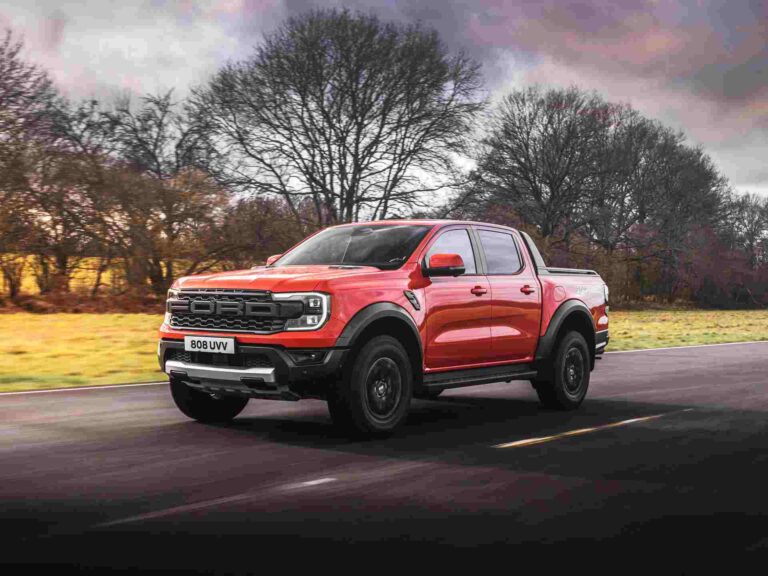1990s Chevy Trucks For Sale: A Comprehensive Buyer’s Guide
1990s Chevy Trucks For Sale: A Comprehensive Buyer’s Guide cars.truckstrend.com
The roar of a small-block V8, the iconic squared-off lines, and the promise of a vehicle built to last – these are just a few reasons why 1990s Chevy trucks continue to capture the hearts of enthusiasts and practical buyers alike. More than just old vehicles, these trucks, primarily from the revered GMT400 platform (1988-1998 for C/K series), represent a golden era of American truck manufacturing. They strike a perfect balance between classic charm and modern usability, making them incredibly relevant in today’s market. Whether you’re seeking a rugged workhorse, a nostalgic daily driver, a platform for customization, or an affordable entry into the classic vehicle world, a 1990s Chevy truck offers a compelling proposition. This guide will delve into everything you need to know about finding, evaluating, and purchasing these enduring American legends.
Why the ’90s Chevy Truck? The Enduring Appeal
1990s Chevy Trucks For Sale: A Comprehensive Buyer’s Guide
The enduring popularity of 1990s Chevrolet trucks isn’t merely a matter of nostalgia; it’s rooted in their inherent qualities and the advantages they offer in the current automotive landscape.
- Unrivaled Durability and Reliability: Built during an era when trucks were engineered for hard work and longevity, these Chevys are renowned for their robust construction. The legendary small-block V8 engines (primarily the 5.7L 350 TBI and later Vortec variants) are known for their bulletproof reliability and impressive lifespan, often exceeding 200,000 or even 300,000 miles with proper maintenance. The sturdy chassis and driveline components contribute to their workhorse reputation.
- Classic Aesthetics and Timeless Design: The GMT400 body style, with its clean lines, muscular stance, and distinctive front fascia, has aged gracefully. It evokes a sense of rugged capability without the overly aggressive styling of modern trucks. This classic look makes them appealing to those who appreciate understated design and a connection to automotive history.
- Versatility for Every Need: From basic single-cab, long-bed work trucks to luxurious extended-cab 4x4s and the popular two-door Tahoe/Yukon SUVs, the 90s Chevy lineup offered an immense range of configurations. This versatility means you can find a truck perfectly suited for hauling, towing, off-roading, daily commuting, or as a blank canvas for custom builds and restorations.
- Affordability and Value: Compared to the sky-high prices of new trucks, a well-maintained 1990s Chevy truck offers incredible value. Even fully restored or exceptionally clean examples often come in at a fraction of the cost of a base model new truck. Their low depreciation, coupled with their utility, makes them a smart financial choice.
- Ease of Maintenance and Parts Availability: Thanks to their widespread production and mechanical simplicity, parts for 1990s Chevy trucks are abundant, easily accessible, and generally affordable. Both OEM and aftermarket components are readily available, making repairs and upgrades straightforward for DIY enthusiasts or professional mechanics.

Key Models and Generations: Navigating the GMT400 Era
The term "1990s Chevy Truck" primarily refers to vehicles built on the GMT400 platform, though earlier 1990 and 1991 models might still include some R/V series heavy-duty trucks (the square body). The vast majority, however, will be the C/K series and their SUV derivatives.
- C/K 1500, 2500, 3500: The bread and butter of the lineup. "C" denotes two-wheel drive (2WD), and "K" denotes four-wheel drive (4WD). The numbers indicate the payload capacity: 1500 (half-ton), 2500 (three-quarter ton), and 3500 (one-ton). You’ll find various cab configurations (regular, extended, crew cab) and bed lengths (short, long).
- Tahoe/Yukon (1992-1999): Introduced in 1992 as the full-size Blazer (and GMC Yukon), these SUVs transitioned to the Tahoe nameplate for Chevy in 1995. Available in highly sought-after 2-door and practical 4-door configurations, they offer the same robust mechanicals with enclosed cargo and passenger space.
- Suburban (1992-1999): The quintessential large SUV, offering seating for up to nine passengers and massive cargo capacity. Based on the same GMT400 platform, it shares most of its mechanicals with the C/K trucks.
- Engine Options:
- 4.3L V6 (TBI/Vortec): A dependable six-cylinder option for lighter-duty tasks, often found in 1500 series trucks.
- 5.0L V8 (TBI/Vortec): A good balance of power and fuel economy for 1500 series.
- 5.7L V8 (350 TBI/Vortec): The most common and highly regarded engine. The TBI (Throttle Body Injection) pre-1996 models are simple and robust, while the later Vortec engines (1996-1999) offer more power and efficiency.
- 7.4L V8 (454 TBI/Vortec): The big block, primarily found in 2500/3500 heavy-duty trucks and Suburbans, offering immense torque for towing and hauling.
- 6.5L Turbo Diesel: A less common option, known for its strong low-end torque but also for potential cooling and injection pump issues.

- Transmission Options: Manual transmissions were available, but most trucks will feature automatic transmissions: the 4L60E (for lighter duty) or the heavier-duty 4L80E (for 2500/3500 and 7.4L/6.5L diesel applications).

What to Look For When Buying: Important Considerations
Purchasing a vehicle that’s 25-35 years old requires a thorough inspection. While these trucks are durable, time and neglect can take their toll.
- Rust: This is the primary enemy. Check the rocker panels, cab corners, wheel wells, bed supports, tailgate, and especially the frame. Surface rust is often manageable, but extensive perforation indicates serious issues. Pay close attention to brake lines and fuel lines, which are prone to rust.
- Engine Health:
- Cold Start: Listen for excessive knocking, ticking, or smoke.
- Oil Leaks: Check valve covers, oil pan, and rear main seal. Minor leaks are common, but major ones indicate neglect.
- Fluid Condition: Check oil (shouldn’t be milky or excessively dark), coolant (should be green/orange, not brown/rusty), and transmission fluid (should be red, not brown or burnt-smelling).
- Power/Performance: Does it accelerate smoothly? Does it feel sluggish?
- Transmission:
- Shifting: Should shift smoothly through all gears without harshness, slipping, or delayed engagement.
- Fluid: Check fluid level and condition. Burnt smell or dark color is a red flag.
- 4WD (if applicable): Engage 4WD high and low. Listen for grinding or clunking.
- Suspension and Steering:
- Play: Check for excessive play in the steering wheel.
- Components: Look for worn ball joints, tie rods, shocks, and leaf springs.
- Ride Quality: Does it feel bouncy or does it pull to one side?
- Electrical System: Test all lights (interior and exterior), power windows, power locks, radio, AC/heater, and gauges. Common issues include faulty gauge clusters or blend doors for the HVAC.
- Interior Condition: Dash cracks are very common. Check seat wear, headliner condition, and general cleanliness. A well-cared-for interior often suggests a well-cared-for truck overall.
- Frame Integrity: Look for signs of welding repairs, bends, or severe rust that could compromise structural integrity.
- Title and VIN Check: Always run a VIN check to verify the vehicle’s history, check for salvage titles, reported accidents, and verify mileage (though odometer fraud is possible). Ensure the title matches the VIN.
- Mileage vs. Condition: Don’t let high mileage automatically scare you away if the truck has been well-maintained. A 250,000-mile truck with a stack of service records can be a better buy than a 100,000-mile truck with no history and obvious neglect.
Where to Find 1990s Chevy Trucks For Sale
The market for these trucks is vibrant and diverse.
- Online Marketplaces:
- Facebook Marketplace: Excellent for local listings, often with direct owner contact.
- Craigslist: Still a strong platform, especially for more affordable, utilitarian examples.
- eBay Motors: Good for broader searches, potentially for more specialized or restored trucks, but often involves shipping.
- Dedicated Forums/Groups: Websites like GMT400.com, Squarebody.com (for earlier square bodies but often have GMT400 discussions), and Facebook groups dedicated to 90s Chevy trucks can be great sources, as sellers are often enthusiasts.
- Classic Car Dealerships/Auctions: If you’re looking for a fully restored, low-mileage, or pristine example, specialized dealerships and auction houses (like Mecum or Barrett-Jackson, though less common for these unless custom builds) are good options. Expect higher prices here.
- Local Classifieds/Word of Mouth: Don’t underestimate the power of old-school methods. Check local papers, bulletin boards, or simply tell friends and family you’re looking.
Tips for Searching: Be flexible with your search terms (e.g., "Chevy C1500," "K1500," "Tahoe," "Silverado," "Cheyenne," "GMT400"). Filter by year, price range, and location.
Tips for a Successful Purchase
- Set a Realistic Budget: Beyond the purchase price, factor in immediate repairs, deferred maintenance, registration, insurance, and any desired modifications.
- Research Specific Models/Years: Understand the differences between TBI and Vortec engines, 4L60E and 4L80E transmissions, and specific trim levels.
- Inspect Thoroughly: Bring a checklist and spend at least 30 minutes looking over the truck. Don’t be afraid to get dirty.
- Pre-Purchase Inspection (PPI): If you’re serious about a truck, especially from a private seller, pay a trusted mechanic to perform a PPI. This small investment can save you thousands down the road.
- Test Drive Extensively: Drive it cold, drive it hot. Test it on surface streets and the highway. Listen for unusual noises, feel for vibrations, and check how it handles. Test all accessories.
- Negotiate Fairly: Be prepared to walk away if the price isn’t right or if the seller is unwilling to budge on significant issues.
- Understand Post-Purchase Costs: Don’t forget sales tax, new tags, and insurance.
Common Challenges and Solutions
While robust, these trucks aren’t immune to issues.
- Rust: The most pervasive issue. Solutions range from minor bodywork and patch panels to full cab/bed replacement or rust repair specialist work. Prevention is key once purchased (undercoating, regular cleaning).
- Worn Components: Ball joints, tie rods, bushings, and shocks are common wear items. The good news is that aftermarket parts are widely available and often affordable, making these repairs straightforward.
- Electrical Gremlins: Aging wiring, faulty grounds, and problematic sensors can lead to dashboard lights, intermittent issues, or non-functioning accessories. A good wiring diagram and a multimeter are your friends, or seek help from an automotive electrician.
- High Mileage: While common, high mileage often means the engine or transmission may be nearing the end of its original service life. Factor in the potential cost of a rebuild or replacement, but remember many of these components are known for their durability.
- Finding an ‘Unmolested’ Example: Many of these trucks have been modified, lifted, lowered, or abused. Finding a well-preserved, original example requires patience and often a higher budget.
Estimated Price Range for 1990s Chevy Trucks For Sale
Prices for 1990s Chevy trucks vary dramatically based on condition, mileage, specific model, engine, drivetrain (2WD/4WD), trim level, and geographic location. The table below provides a general range, but individual examples may fall outside these estimates.
| Model / Type | Year Range | Condition: Poor/Parts (Running) | Condition: Fair/Driver | Condition: Good/Solid Driver | Condition: Excellent/Show |
|---|---|---|---|---|---|
| C1500/K1500 (Reg/Ext Cab) | 1990-1998 | $1,000 – $3,000 | $3,000 – $7,000 | $7,000 – $12,000 | $12,000 – $25,000+ |
| C2500/K2500 (Reg/Ext Cab) | 1990-1999 | $1,500 – $4,000 | $4,000 – $8,000 | $8,000 – $15,000 | $15,000 – $30,000+ |
| C3500/K3500 (Dually/Cab & Chassis) | 1990-1999 | $2,000 – $5,000 | $5,000 – $10,000 | $10,000 – $18,000 | $18,000 – $35,000+ |
| Tahoe/Yukon (2-Door) | 1992-1999 | $2,500 – $5,000 | $5,000 – $10,000 | $10,000 – $20,000 | $20,000 – $40,000+ |
| Tahoe/Yukon (4-Door) | 1995-1999 | $2,000 – $4,500 | $4,500 – $9,000 | $9,000 – $18,000 | $18,000 – $35,000+ |
| Suburban | 1992-1999 | $1,500 – $3,500 | $3,500 – $7,500 | $7,500 – $15,000 | $15,000 – $30,000+ |
Notes on Pricing:
- Condition is King: The most significant factor. A rust-free, low-mileage, well-maintained example will command a premium.
- Engine/Drivetrain: Trucks with the 5.7L Vortec V8 and 4WD often fetch higher prices. The 7.4L big block in HD trucks also adds value for towing enthusiasts.
- Location: Prices can be higher in regions where rust is less prevalent (e.g., Southwest US) due to better overall condition.
- Modifications: Tasteful, professionally done modifications can add value, but poorly executed or extreme mods may detract from it.
- Documentation: A stack of service records significantly increases a truck’s perceived value.
Frequently Asked Questions (FAQ)
Q1: Are 1990s Chevy trucks reliable?
A1: Yes, they are generally considered very reliable, especially models equipped with the 5.7L (350) V8 engine. Their mechanical simplicity makes them easy to maintain and troubleshoot. Regular maintenance is key to their longevity.
Q2: What’s the best engine for a 1990s Chevy truck?
A2: For most applications, the 5.7L (350) V8, particularly the later Vortec version (1996-1999), is highly recommended for its excellent balance of power, reliability, and fuel economy. For heavy towing, the 7.4L (454) V8 is the top choice.
Q3: How much does it cost to maintain a 1990s Chevy truck?
A3: Maintenance costs are generally low due to the widespread availability and affordability of parts. Expect typical wear-and-tear items like brakes, tires, and fluids. Major repairs, if needed, will depend on the issue, but parts themselves are often inexpensive.
Q4: Are parts easy to find for 1990s Chevy trucks?
A4: Extremely easy! Due to their high production numbers and shared components across various GM vehicles, both OEM and aftermarket parts are readily available from auto parts stores, online retailers, and salvage yards.
Q5: Can a 1990s Chevy truck be a daily driver?
A5: Absolutely. Many enthusiasts and practical users continue to daily drive these trucks. While they may lack some modern amenities, their reliability, comfort, and utility make them perfectly capable daily vehicles, often with lower operating costs than a new truck.
Q6: What’s the difference between C and K models?
A6: "C" indicates a two-wheel drive (2WD) truck, while "K" indicates a four-wheel drive (4WD) truck. The number following (e.g., 1500, 2500, 3500) refers to the payload capacity (half-ton, three-quarter ton, one-ton).
Conclusion
The appeal of 1990s Chevy trucks is more than just nostalgia; it’s a testament to their robust engineering, timeless design, and enduring utility. As accessible classics, they offer a unique blend of affordability, reliability, and customization potential that few other vehicles can match. By understanding what to look for, where to search, and what to expect, you can confidently navigate the market and find a GMT400-era Chevy truck that will serve you faithfully for years to come. Whether it becomes your trusted work companion, a weekend cruiser, or a project vehicle, owning a ’90s Chevy truck is an investment in a piece of American automotive history that continues to prove its worth on the road.




